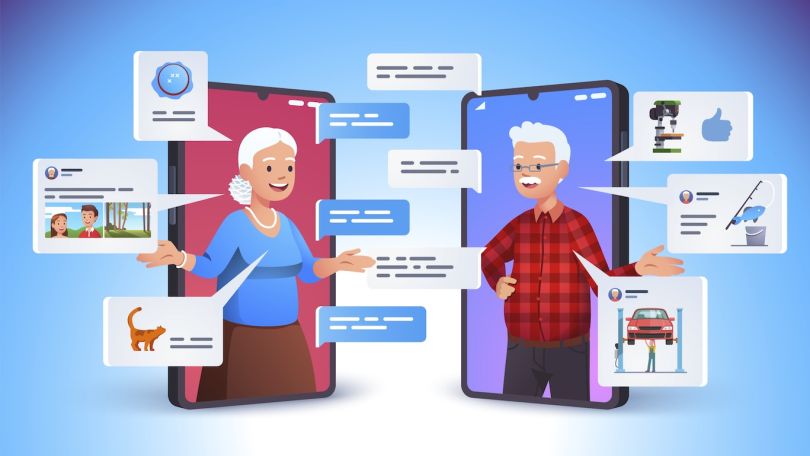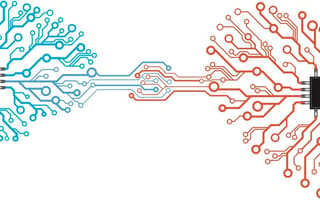Do you track how many steps you take, use tech to help you meditate or let an app count your calories?
You’re not alone — the market for using tech to achieve physical and mental wellness is over, according to Amy Baglan, a serial entrepreneur well acquainted with the World Health Organization’s definition of health as a balance of physical, mental and social well-being.
When thinking of her next product, Baglan knew she wanted to make a wellness app. But she also felt the market for using tech to achieve mental and physical health was full. That left creating a product to achieve social wellness — meaning the ability to foster and maintain genuine interpersonal connections — a trend that is just beginning, she said.
Fabriq
- Founded: 2019
- Headquarters: Denver, CO
- Funding: $120K
- Industry: Wellness
Over the past week, app downloads of Fabriq — the social wellness app that Baglan cofounded in 2019 — have surged, as the Denver firm has unveiled new features designed to help those social distancing feel connected through the coronavirus pandemic.
The app has reported a 42 percent increase in the number of phone calls, texts and video chats people are having with friends and family, as well as a 20 percent increase in the number of daily users week over week. Last week, the app surpassed more than 200,000 connections being tracked.
“Users are more aware of the importance of making those connections during this time.”
“We’re seeing people logging more connections per session, which tells us that Fabriq users are more aware of the importance of making those connections during this time,” Baglan said.
Fabriq helps users be more mindful about checking in with friends and family. The creators wanted to design a user experience that reflected the level of intimacy people feel for their partners, while nudging them to reach out without being annoying. But the impersonal nature of a social wellness app presented design challenges.
“We didn’t want it to feel like another piece of tech,” Baglan said. “I don't want to feel like I’m using a [customer relationship management] tool. I want to feel like I’m actually nurturing my social fabric itself.”
Making UX to mimic IRL relationships
Fabriq is structured according to the limits of Dunbar’s number, a theory that states there is a cognitive limit to the number of stable social relationships an individual can hold. Most people have about 150 strong connections, Baglan said, which they categorize along four degrees of intimacy.
Designing to reflect the way people think about their relationships meant having users input and then prioritize their connections according to four levels of strength. Once connections are organized by level of intimacy, users upload a picture and information about the person, as well as define how often they want to reach out.
Under each connection are generic conversation starters. Some Fabriq users have asked the firm to automatically write and send messages for them, Baglan said — asking a friend, say, how they’re doing every three weeks.
Baglan said this sounds good in theory, but doesn’t create a genuine relationship.
“We don’t want to pretend to be you. That not in integrity with why we’re doing this and why most of our users are doing this.”
“We don’t want to pretend to be you,” Baglan said. “That’s not in integrity with why we’re doing this and why most of our users are doing this.”
When it’s time for users to reach out to their family, Fabriq sends out a push notification, and is careful to structure the language as a suggestion, like “Hey, have you talked to dad recently?” The firm is currently working on sending reminders to users also through text message. Once this feature launches, individuals will be able to personalize the type of notification they receive.
“We’re giving people suggestions as a way to stay on top of their relationships, but not have it be a mental burden, not to have cost on their cognitive load,” Baglan said.

Designing a system to quantify social habits
Mandated social distancing is making people more mindful about reaching out to friends and family. But even before the coronavirus began spreading, Baglan said she saw the need for an app that helps users hack their personal relationships.
“We all have seen just an explosion of personal practices over the past 10 years that are supposed to make us the best human beings that we can be,” said Baglan, a green smoothie advocate who previously worked in the yoga, dating and mindfulness tech spaces. “I don’t think there’s much more we can do.”
She believes cultural interest will now shift toward focusing on social wellness, which offers a new market opportunity. Enter Fabriq, which is set to exit beta mode in April and will likely start charging a subscription fee then.
The app differs from customer relationship management systems since its users do not have sales-related end goals in sight, Baglan said. Fabriq also is not intended to replace Facebook or Instagram, she added, and intentionally lacks a newsfeed to provide updates on connections. To that end, Fabriq has worked to be intentional about how it incorporates gamification principles in its user experience. Features like touch-base timers for when to connect with people were inspired directly by video games and gamification principles, she said.
“We feel very strongly that gamification for the sake of gamification, it’s not going to work for our users. We’re not about keeping you in the app and addicting you to it.”
“We feel very strongly that gamification for the sake of gamification, it’s not going to work for our users,” Baglan said. “We’re not about keeping you in the app and addicting you to it. Our only purpose is to support you in building better social habits.”
Last week Fabriq unveiled an optional goal-tracking system, as a way to measure and inspire better social habits. The system encourages users to add more information about their connections — setting reminders for someone’s birthday, changing the frequency of connecting, tracking the quality of their conversations — all with the idea for users to constantly reevaluate who they want to focus their energy on and how they want to interact with them.
“It’s not just quantity — let me get out and do all the things, and then take the selfies — right?” Baglan said. “It gets down to our communication skills, like how is our self-confidence? When we show up with others, are we showing up authentically, are we able to be vulnerable? Can we express empathy? Do we have strong listening skills? All of that creates our connection.”
Because tracking social wellness is a fairly new proposition, there is not yet a shared language around which the app “could offer charts, graphs, and performance indicators,” according to Adam Taylor, chief product officer. For this reason, Fabriq articulates individuals’ progress toward their goals through a directional bar.
“By abstracting progress to a simple directional bar toward the off-track/on-track poles, we’re beginning with an experience made for beginners — which all of us are, ultimately, at this point,” Taylor wrote in an email to Built In.
The app also started sending out suggestions for how to connect creatively during the coronavirus last week, with recommendations ranging from holding virtual dinners where attendees discuss just one topic to video calls groups where attendees act out a scene from a screenplay.
“Social wellness is just beginning I think,” Baglan said. “We’re feeling the need for this more than ever right now.”




